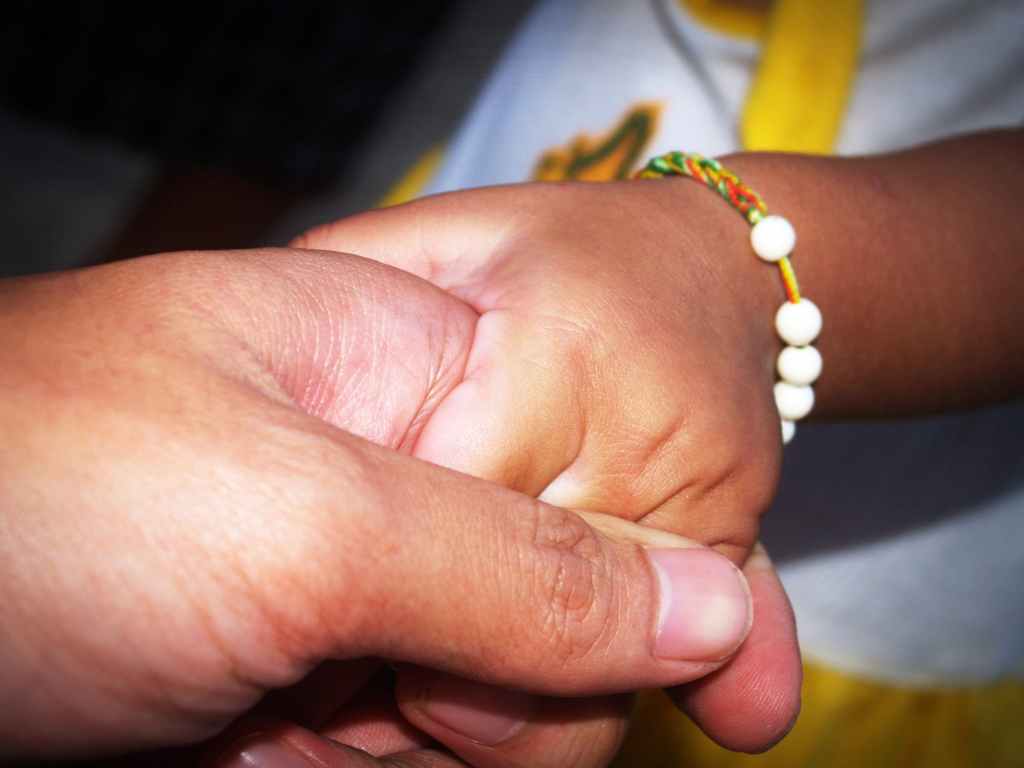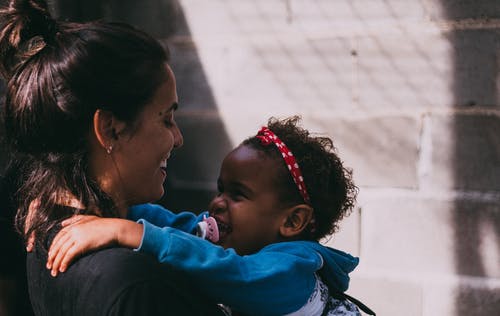A reminder that social workers/mental health professionals carry the weight of others and should remember their self-care.
The once sturdy cement walls have crumbled to meet the white tile floor. The air is caked with the dust that came from the entire building collapsing around me. For as far as I can see there is nothing but this same destruction. I fall to my knees and begin anxiously digging through the rubble like a dog looking for a bone he long past buried in the yard. I feel the wetness of blood on my temple, a shooting pain in my side.
I don’t know where the others have gone.
I don’t know how I am possibly going to save all of these children alone.
There are far too many children.
I continue digging, the cement tearing my flesh to shreds. Until finally I tunnel my way inside. Children are scattered around the room like thrown dice in a Yahtzee game. In the middle of the floor, there is a giant swirling hole. I watch as three of them are sucked down into it before my eyes. The echoes of their screams pierce my heart.
There are two children, barely hanging on, their bodies dangling like puppets into the swirling vortex that seems to be ever growing.
I yell to the others to get back as I simultaneously make my way through the rubble to those children on the edge. I lay flat on my stomach, reach out, and demand for the child on my right to grab my hand. He is not as deeply submerged as the other, pulling him to safety will be less of a challenge.
Once he is safe, I reach back to the child on my left. He is hanging on by only one hand. I see him trustingly reach for me and then feel his strong grip around my wrist. The contrast of his dark brown skin against the white of my own does not escape me even in my panic.
“Hold on,” I shout while looking directly into his kind eyes, “I got you.”
My left side is obnoxiously reminding me that I don’t have the strength to do what needs to be done. I wince from the pain that radiates more from that truth than from an injury.
 “Let me go,” the boy yells back, his voice holding more wisdom than he is old enough to possess.
“Let me go,” the boy yells back, his voice holding more wisdom than he is old enough to possess.
I tighten my grip in response, my determination meant to give him enough hope to hold on.
But hope by itself does nothing to change reality.
I hear a deep brooding voice from behind that I recognize instantly.
“C’mon, we have to go.”
I feel a sense of relief wash over me. He will help me. He will get the rest of the children to safety.
“Get the others first,” I demand.
I continue my attempts to pull this one boy from the vortex that now seems equally intent on claiming him as its prize. I feel his hand loosening around my wrist.
“Don‘t let go. I promise to get you out,” I attempt to mask my panic.
I notice when I look at him that panic is a state I occupy alone. His kind eyes appear softer than they were before. He manages to turn the corners of his mouth into the slightest of smiles. That smile was his gift to me. It was his way of letting me know that it was okay to leave him. He knows that neither of us has the strength to pull him out of here.
I know it too.
I don’t want to know it, but I do.
I feel a hand on my back and again the voice I recognize.
“We have to go.” It booms intently. “We have to get out.”
I feel the boy’s hand begin to slip. 
“No,” I plead with him, ignoring the call to leave, “Hold on to me. Please hold on to me. I will not let you fall.” I choke back my sobs as I continue to fight the superhuman strength of the vortex pulling the boy in the other direction.
“You have to go,” he nearly whispers the words as he loosens his grip on my wrist.
I feel his fingers pass briefly through my own.
As he slips from my hands, I stare on helplessly while he falls into the swirling abyss. I climb forward nearly falling into the hole myself as the hand on my back continues to pull me in the opposite direction.
“We have to go,” the voice behind me calls again. He jerks me to my feet and yells the words meant to assuage my guilt, “We can’t save them all.”
I begin to kick and fight as I am dragged from the room by my waist.
The room is filled with children.
“No,” I scream. “No. We have to save them. We can’t leave them, “I yell as I kick wildly trying to escape.
I have no strength to do what needs to be done.
There are just so many children.
I jump with a start from my pillow. My eyes are flooded with tears. My heart is heavy in my chest. I cannot catch my breath. I take no comfort in being awake. It wasn’t just a dream.
I am haunted.
Haunted by the faces.
Haunted by the truth.
Haunted by the helplessness of watching child after child slip through my fingers while I try to fight something that is bigger than me. 
“We cannot save them all.” The words echo in my head as I sit in the safety of my bedroom tears streaming down my face for that boy who slipped through my fingers in my sleep just moments before.
It is easy to accept that all children can’t be saved when you don’t know them.
When you don’t hear their pain.
But I saw them.
I heard them.
I knew them.
Then I watched them slip away.
And that is why I am haunted.
This story is not a story at all. It is the real-life situation that resulted in me resigning from my position as an Administrator of a Juvenile Justice residential program, after 16 years of working with system involved children. Were this just a telling of one person’s experience that would be tragic enough. However, when you look across people serving systems, rates of undiagnosed secondary trauma run rampant. In fact, I was so surrounded by it myself at the time, despite having a Masters Degree in Social Work, I didn’t even realize that what I was experiencing had a name. I just knew I couldn’t watch one more child fall through one more crack.
Statistics suggest that as many as 85% of “helping professionals” develop vicarious trauma, compassion fatigue, and/or high rates of traumatic symptoms. (See below). Not only does that stress affect the person who has been hired to fill a critical role, but it also reduces the efficacy of the very systems designed to help the most vulnerable among us. To heal themselves, it is incumbent upon systems to create space for staff to work through the daily harm they encounter through connection to people in ongoing crisis. After all, the whole will only ever be as well as the sum of its parts.
Statistics from the field: (http://www.olgaphoenix.com/blog/painful-truths-about-vicarious-trauma-statistics-from-the-field/)
Between 40% and 85% of “helping professionals” develop vicarious trauma, compassion fatigue and/or high rates of traumatic symptoms, according to compassion fatigue expert Francoise Mathieu (2012).
Social Workers, MSW:
- 70% exhibited at least one symptom of secondary traumatic stress (Bride, 2007).
Social Workers:
- 42% said they suffered from secondary traumatic stress (Adams et al., 2006).
Social Workers, Domestic Violence and Sexual Assault:
- 65% had at least one symptom of secondary traumatic stress (Bride, 2007).
Therapists, Sexual Assault:
- 70% experienced vicarious trauma (Lobel, 1997).
Hospice Nurses:
- 79% moderate to high rates of compassion fatigue (MMC van Mol, 2015).
About the Author: Kristie G. Stutler is a Regional Vice President for USI. She has a Masters of Science in Social Work, 16 years of experience working with system-involved youth, and 3 years of experience working in juvenile justice reform. She is a Class 10 Fellow in the Annie E. Casey Children and Family Fellowship, a trainer, a writer, and a lover of all things that rhyme…